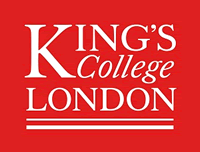Applications are invited for fully funded 3,5 years full-time PhD studentship (including home tuition fees, annual stipend and consumables) starting on 1st October 2022.
Project Description
Cancer is among the leading causes of death worldwide. Detection, diagnosis and clinical intervention can significantly increase chances of patient survival. However, current non-invasive imaging methods are unable to visualise the microvasculature associated with cancerous tumours deep in the body.
Recently developed super-resolution ultrasound (SR-US) imaging1-4 is gaining world-wide recognition due to its ability to achieve a resolution far beyond the conventional limit for ultrasound (US), allowing visualisation of micro-vascular structure and flow. Alongside highly detailed micro-vascular images, SR-US also has potential to provide access to multiple new quantitative functional and morphological parameters that could be crucial for tumour characterisation.
Nevertheless, when imaging deep in the human body, significant challenges can exist for SR-US, including significant tissue motion, and the presence of overlaying tissues can cause significant sound aberration. Furthermore, SR-US in 2D has been hampered by the lack of information in the third dimension, resulting in the overlap of information (~mm) in clinical systems.
Recent advances in biomedical ultrasound including ultrafast data acquisition and 2D array probe technology allows the acquisition of up to tens of thousands of imaging frames per second. These have made it possible to non-invasively image the microvascular morphology and flow dynamics with a resolution of tens of microns at a higher frame rate, and acquire volumetric data in deep tissue.
In this project, we propose to develop advanced SR-US for tumour characterisation, which will involve the following:
1)
- Initially, the student will implement existing SR-US localisation and tracking algorithms on existing clinical datasets with valuable histological ground truth data. These have minimal motion and shallow depths providing an important opportunity to examine how 2D SR-US can help discriminate benign from malignant tumours in a clinical setting.
- The student can propose new, and refine existing, functional and morphological quantitative measures aimed at extracting microvascular details not possible with existing diffraction-limited techniques over large clinical datasets. By developing an understanding of the challenges of SR-US in a clinical environment, the student will have acquired the knowledge and comprehension to aid in its development.
- the student will implement and evaluate the most up-to-date SR-US post-processing developments, e.g. robust motion correction and advanced tracking algorithms.
2)
- A framework will be developed to validate methodological advancements in a controlled set-up using ultrasound simulations with realistic motion and aberration and experiments.
- The student will develop and evaluate signal processing algorithms for robust motion and aberration correction and explore novel signal and image processing methods for more efficient and automated SR-US implementation on a research system. Experimental and in vivo data acquisition of microbubble based imaging data will be acquired. The student will evaluate and optimise imaging and correction algorithms using the validation framework.
- The student will propose and define strategies for extending the imaging strategies with a research system and programmable 2D matrix-array probe (ULA-OP, Vermon) to allow 3D SR-US imaging.
3)
- Evaluating and optimising both 2D and 3D methodologies in vivo.
- Use the proposed advancements to measure tumour characteristics in clinical setting with mainly rigid motion and shallow depths (focal testicular tumours).
- Use the proposed technology to measure tumour characteristics in clinical setting in more challenging application (kidney, liver).
Applicants are encouraged to contact the lead supervisor (Dr Kirsten Christensen-Jeffries) before applying - [Email Address Removed]
Further information on how to apply can be found here.
Closing date - 26th August 2022 (please note that applications can be closed early if a suitable candidate is found).

 Continue with Facebook
Continue with Facebook



